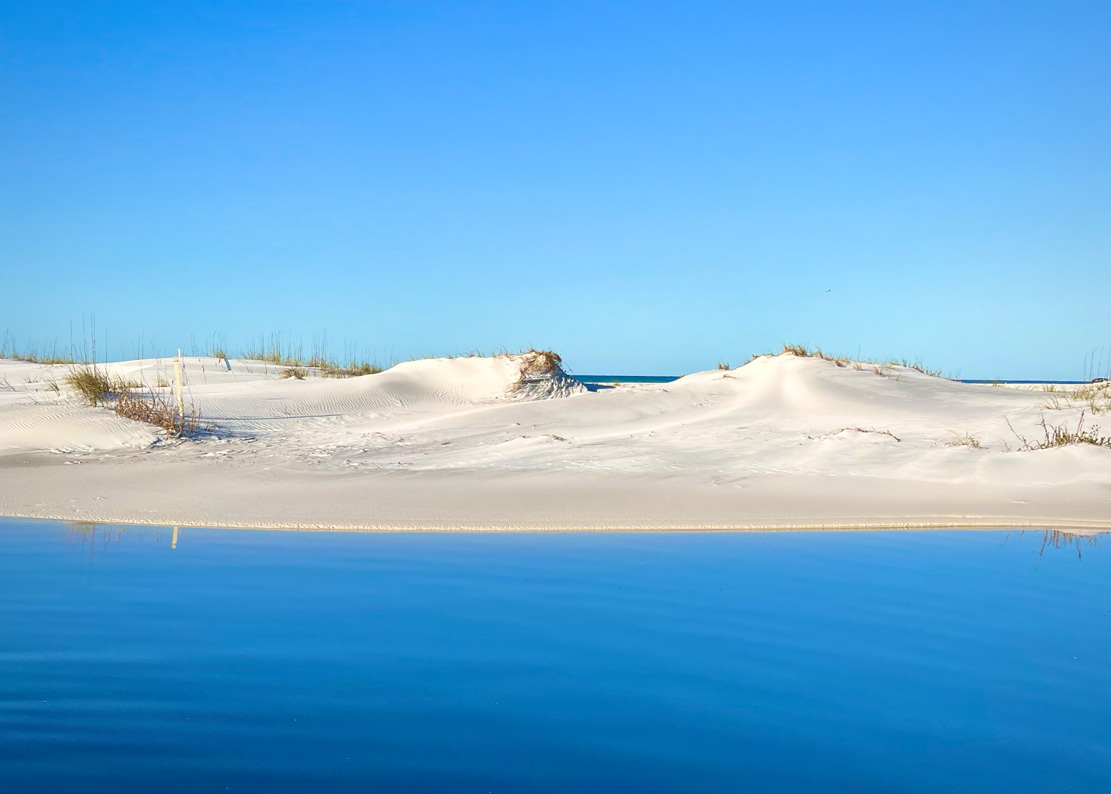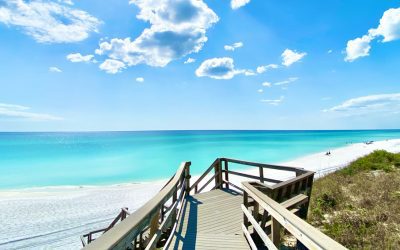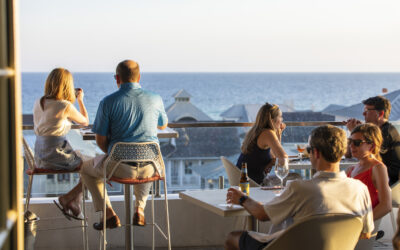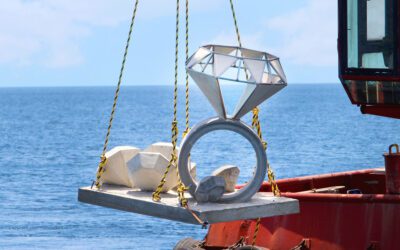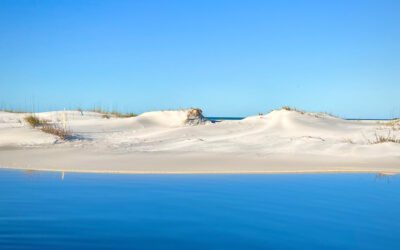All About The Famous White Sands of 30a
What is up with the famous sparkling white sands of 30A?!
On sunny days, the color is as white as flour. On Florida’s Emerald Coast, it has a defining presence that transforms everything it comes into contact with, from the sea itself to the people that travel along the coastline it creates.
This velvety powder is actually rock, consisting almost entirely of quartz and finely powdered seashells. They come together to produce a seafloor that extends kilometers into the Gulf of Mexico. Along the length of the coastline, sandbars that are submerged as a result of Gulf wave action. The effect of sunlight that has been distorted and reflected off the seafloor gives the water in the shallows the appearance of being illuminated from within. The magnificent color gradations from white to aquamarine to cobalt blue are brought about by the interaction of the sun, sea, and sand.
A stroll around the Emerald Coast’s beaches is a sensory adventure. The sand is so pristine that it makes noise when you step on it. The sensation of touching impossible-soft, uniformly-colored sand contrasts with seas that are the color of Listerine. The wet parts create a slurry that is soft and abrasive at the same time, making it ideal for play or sculpture. This lovely seaside environment spreads for miles in both directions. Although there are other beaches farther east and west, none of them can compare to the Emerald Coast’s surreal beauty.
Original Home
What about the sand’s origin? Why, therefore, does every other beach in the world seem so insignificant in comparison?
The Appalachians, in particular, are what the Emerald Coast’s beaches are composed of. The story starts 12,000 years ago, in the closing centuries of the previous ice age, when the world was warming and the miles-deep North American ice sheet was completely retreating. It can only be said that the ice and rock that formed beneath the Appalachians’ spine served as a vast crucible that crushed the quartz into a fine talc-like powder (under a microscope, the individual grains are finely worn into ovals, like small identical pieces of sea glass). A large portion of the slurry that was transported to the Gulf of Mexico through the channel that is now known as the Apalachicola River was carried by the torrent of melting ice that had become a torrent. The powdered quartz was carried in all directions after reaching the coast by tides and currents, but predominantly east. A completely distinct coastline developed as the centuries passed by.
That Water!
Why are the Emerald Coast’s seas so bright and clear? The quick response: The lack of pollution, particularly in comparison to the coastal waters west of the Mississippi. This is due to various factors. First off, Florida is the only Gulf state that forbids offshore drilling, a sector that is supported by a pipeline, refinery, and rig infrastructure. Due to the lack of this infrastructure, Florida beaches receive significantly less greasy sludge. Currently, a 10-year ban that will be renewed in September 2020 is in force and is overwhelmingly supported by Floridians, many of whom rely on tourism for a living. Florida saw 145.4 million out-of-state visitors in 2019, who spent $98.8 billion there and helped to sustain 1.6 million employment. The spotless beaches and coastal seas are among those vacationers’ main draws.
The Mississippi River also deserves thanks from the Emerald Coast. 100 miles southeast of New Orleans is where the river empties into the Gulf of Mexico. It rushes across southern Louisiana in the direction of the southeast before abruptly turning to the west-southwest. This curve, which sends its cargo of sediment, mud, and runoff away from Florida before it flows into the Gulf. Since there are no significant river discharges east of the Mississippi, the northeastern Gulf of Mexico has far less sediment.
In the northwest of Florida, white sand beaches reach as far west as Cape San Blas and as far east as Pensacola, which is close to the Alabama/Florida boundary. But some of the sand has moved, making its way to the beaches between St. Petersburg and Marco Island in the southeast.
Recent Articles
Fun things to do while on 30a
30A, also known as Florida's Scenic Highway 30A, is a beautiful stretch of coastline that offers a plethora of fun activities for both locals and tourists. From stunning beaches to picturesque towns, there is always something to do on 30A. In this article, we will...
What is 30A?
30A is a stunning stretch of coastline located in the Florida panhandle, famous for its pristine beaches, crystal-clear waters, and upscale beach towns. The area covers approximately 26 miles of shoreline and is known for its laid-back, luxurious vibe. In this blog...
Top Date Night Restaurants on 30A
30A is a popular stretch of coastline in Florida that's home to some of the most beautiful beaches in the country. But it's not just the sand and surf that draw people here. The area is also home to some of the best restaurants in the region, serving up a range of...
Under Sea Art Museum
Welcome to North America’s only permanent under water art museum, located right off our coast in South Walton!
Beach Safety
Here are the local rules and how to stay safe while enjoying our beaches.

